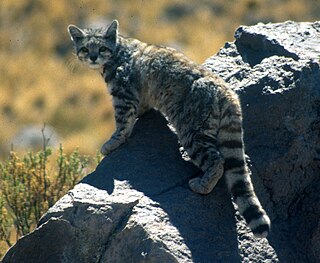- Extinct in the wild (EW): 1 species
- Critically endangered (CR): 195 species
- Endangered (EN): 343 species
- Vulnerable (VU): 608 species
- Near threatened (NT, LR/cd): 301 species
- Least concern (LC): 2,843 species
- Data deficient (DD): 1,702 species
- 5993 extant species have been evaluated
- 4291 of those are fully assessed [lower-alpha 1]
- 3144 are not threatened at present [lower-alpha 2]
- 1146 to 2848 are threatened [lower-alpha 3]
- 59 to 105 are extinct or extinct in the wild:
- 58 extinct (EX) species [lower-alpha 4]
- 1 extinct in the wild (EW)
- 46 possibly extinct [CR(PE)]
- 0 possibly extinct in the wild [CR(PEW)]
- ↑ excludes data deficient evaluations.
- ↑ NT, LR/cd, LC.
- ↑ Threatened comprises CR, EN and VU. Upper estimate additionally includes DD.
- ↑ Chart omits extinct (EX) species

In July 2017, the International Union for Conservation of Nature (IUCN) listed 343 endangered insect species. [1] Of all evaluated insect species, 5.7% are listed as endangered. The IUCN also lists 21 insect subspecies as endangered.
Contents
- Blattodea
- Orthoptera
- Lentulids
- Tetrigids
- Euschmidtiids
- Mogoplistids
- Pamphagids
- Crickets
- Acridids
- Tettigoniids
- Phaneropterids
- Hymenoptera
- Lepidoptera
- Swallowtail butterflies
- Lycaenids
- Nymphalids
- Other Lepidoptera species
- Beetles
- Dytiscids
- Stag beetles
- Geotrupids
- Longhorn beetles
- Scarabaeids
- Other beetle species
- Odonata
- Platystictids
- Platycnemidids
- Megapodagrionids
- Gomphids
- Calopterygids
- Coenagrionids
- Aeshnids
- Libellulids
- Other Odonata
- Other insect species
- See also
- References
No subpopulations of insects have been evaluated by the IUCN.
For a species to be considered endangered by the IUCN it must meet certain quantitative criteria which are designed to classify taxa facing "a very high risk of extinction". An even higher risk is faced by critically endangered species, which meet the quantitative criteria for endangered species. Critically endangered insects are listed separately. There are 538 insect species which are endangered or critically endangered.
Additionally 1702 insect species (28% of those evaluated) are listed as data deficient, meaning there is insufficient information for a full assessment of conservation status. As these species typically have small distributions and/or populations, they are intrinsically likely to be threatened, according to the IUCN. [2] While the category of data deficient indicates that no assessment of extinction risk has been made for the taxa, the IUCN notes that it may be appropriate to give them "the same degree of attention as threatened taxa, at least until their status can be assessed". [3]
This is a complete list of endangered insect species and subspecies as evaluated by the IUCN.

